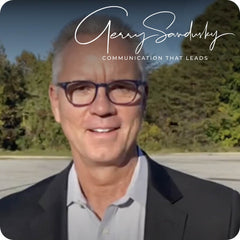Did you know how you end your emails can significantly impact how you are perceived professionally? Your email closing lines can leave a lasting impression and shape your professional persona. In this article, we will delve into the art of professionally ending an email, providing valuable insights and practical techniques to enhance your communication skills. Whether you're a seasoned executive or an ambitious entrepreneur, our expert advice will help you master the art of email endings and project confidence, authority, and professionalism in every message you send.
The Importance of Professional Email Closings
The way we end our emails may seem like a small detail, but it holds significant importance in professional communication. A professional email closing serves as the final impression we leave on our recipients, and it can greatly impact how we are perceived in the business world. By choosing the right closing lines, we have the opportunity to convey professionalism, respect, and confidence. A well-crafted email ending not only leaves a positive impression but also enhances our overall communication skills. It shows that we pay attention to detail, value our professional relationships, and understand the importance of effective communication. Therefore, mastering the art of professional email closings is essential for professionals and business executives who aim to make a lasting impact in their email communications.
How To End An Email Professionally
Here are some examples of professional email closings that you can use to end your emails in a polished and professional manner:
- Best regards,
- Sincerely,
- Kind regards,
- Warm regards,
- Respectfully,
- Thank you,
- Yours faithfully,
- Yours sincerely,
- With gratitude,
- All the best,
- Regards,
- With appreciation,
- Best wishes,
- Take care,
- Looking forward to hearing from you,
- Have a great day,
- Until next time,
- With warmest regards,
- Wishing you success,
- In your service.Remember to choose a closing that aligns with the tone and formality of your email and the relationship you have with the recipient.
Strategies for Crafting an Effective Email Farewell
Tailor the Closing to the Context
When crafting effective email farewells, it's important to consider the context of your email and tailor the closing accordingly. Here are some strategies to keep in mind:
- Formality: Adjust the level of formality based on the recipient and the nature of your relationship. For more formal or professional emails, opt for traditional closings like "Sincerely" or "Best regards." For less formal or familiar relationships, you can use closings like "Kind regards" or "Warm regards."
- Personalization: Whenever possible, personalize the closing to add a touch of warmth and authenticity. Consider including the recipient's name or a brief reference to your previous conversation or meeting. For example, "It was a pleasure meeting you at the conference, John. Best regards."
- Email Purpose: Tailor the closing to match the purpose of your email. If you're requesting a favor or seeking assistance, expressing gratitude with a closing like "Thank you" or "With gratitude" can be appropriate. If you're closing a business deal or negotiation, a more formal closing like "Yours faithfully" or "Yours sincerely" may be suitable.
Convey Professionalism and Confidence
Crafting effective email farewells involves conveying professionalism and confidence. Here are some strategies to achieve this:
- Keep it concise: Keep your closing line brief and to the point. Avoid lengthy or overly elaborate closings that may come across as unprofessional or insincere.
- Avoid clichés: Steer clear of generic or overused closings like "Best wishes" or "Take care." Instead, opt for more unique and memorable closings that reflect your professionalism and individuality.
- Maintain a positive tone: End your email on a positive note to leave a lasting impression. Use words like "looking forward to," "excited," or "eager" to convey enthusiasm and confidence in your future interactions.
Consider the Cultural and Industry Norms
When crafting effective email farewells, it's crucial to consider cultural and industry norms. Here are some considerations:
- Cultural Sensitivity: Be mindful of cultural differences and norms when communicating with individuals from diverse backgrounds. Research and understand appropriate email closings in different cultures to ensure respect and avoid any unintended offense.
- Industry-specific Closings: Some industries may have specific email closing conventions. For example, in the legal or financial sector, closings like "Yours faithfully" or "Yours truly" are commonly used. Familiarize yourself with industry-specific norms to maintain professionalism and credibility.
- Consistency: Establish consistency in your email closings to build familiarity and professionalism. Choose a closing that aligns with your brand and use it consistently across your email communications.By employing these strategies, you can craft effective email farewells that leave a positive impression, convey professionalism, and build strong professional relationships.
What Are Some Examples Of a Warm Closing Sentence To End an Email?
Here are a few examples of pleasant closing sentences to end an email, incorporating elements such as email sign-offs, email signature, politeness, greetings, and closure:
- "Thank you for your time and consideration. Best regards, [Your Name]"
- "Wishing you a productive day ahead. Warm regards, [Your Name]"
- "If you have any further questions, please feel free to reach out. Kind regards, [Your Name]"
- "Looking forward to connecting with you soon. Sincerely, [Your Name]"
- "Have a wonderful weekend! Best wishes, [Your Name]"
- "Thank you once again for your assistance. With gratitude, [Your Name]"
- "I appreciate your prompt attention to this matter. Yours faithfully, [Your Name]"
- "Sending you my best regards. Take care, [Your Name]"
- "It was a pleasure speaking with you. Until next time, [Your Name]"
- "Thank you for your understanding. With warmest regards, [Your Name]"Remember to customize the closing sentence based on the context and relationship with the recipient, and always include your contact information, name, and signature in your email sign-offs for a professional touch.
What Is The Best Email Sign-off?
The best email sign-off will vary depending on the context and the relationship you have with the recipient. It's important to choose an appropriate sign-off that reflects your professionalism and the tone of the email.
Consider using a closing such as “Best regards” or “Sincerely” in formal business communications. These sign-offs convey a sense of politeness and respect. If you have a more casual relationship with the recipient, you can opt for “Best” or “Thanks” followed by your name.
In some cases, it may be appropriate to include additional information or a call to action in your sign-off. For example, if you're requesting a response or asking for a specific action, you can use a sign-off like “Looking forward to hearing from you” or "Please let me know if you have any further questions."
Ultimately, the best email sign-off is one that aligns with your style, the relationship with the recipient, and the purpose of the email. It should leave a positive impression and reflect your professionalism and courtesy. Remember to always proofread your email before sending it to ensure it conveys the intended message clearly and concisely.
Dos and Don'ts of Email Closing Lines
Dos of Email Closing Lines
- Be Professional: Maintain a professional tone in your email closing lines. Use appropriate language and avoid using slang or informal expressions.
- Match the Tone: Ensure that the closing line matches the overall tone of your email. If your email is formal, choose a closing line that reflects that formality. If your email is more casual, you can opt for a slightly less formal closing.
- Express Gratitude: Show appreciation when appropriate. Thank the recipient for their time, assistance, or consideration. This adds a polite touch to your email.
- Keep it Concise: Keep your closing line concise and to the point. Avoid lengthy or wordy closings that may come across as unnecessary or insincere.
Don'ts of Email Closing Lines
- Avoid Overused Clichés: Steer clear of generic and overused closing lines such as "Best regards" or "Sincerely yours." These can sound impersonal and lack originality. Try to choose a closing line that stands out and reflects your personality.
- Don't Overdo It: While it's important to be polite, avoid excessive or overly effusive language in your closing line. It can come across as insincere or unprofessional.
- Don't Forget Your Signature: Always include your name or email signature at the end of your email. This provides a professional touch and makes it easier for the recipient to identify and contact you.
- Avoid Informal Language: Refrain from using overly casual or informal language in your closing line, especially when communicating with professional contacts. It's important to maintain a level of professionalism throughout your email.By following these dos and don'ts, you can ensure that your email closing lines are professional and appropriate, and leave a positive impression on the recipient.
Conclusion
In conclusion, mastering the art of ending an email professionally is a valuable skill for professionals and business executives. By understanding the importance of email closing lines and implementing the strategies discussed in this article, you can leave a lasting impression, enhance your professional communication skills, and project confidence and authority in your email correspondence. Remember to tailor your closings to the context, convey professionalism and confidence, and consider cultural and industry norms. By following the dos and avoiding the don'ts, you can ensure that your email closings reflect your expertise, professionalism, and respect for your recipients. So, go ahead and apply these tips to elevate your email communication and make a positive impact in your professional interactions.
Final Thoughts
Make your mark with Artlogo's exceptional signature designs. Our team of experts is dedicated to creating personalized handwritten signatures, logos, and QR code business cards that enhance your professional presence. With our meticulous craftsmanship and unwavering commitment to excellence, Artlogo guarantees that your signature will leave a lasting impression, exuding confidence and professionalism in every email, document, or business card you share.
Sources
























Share to: